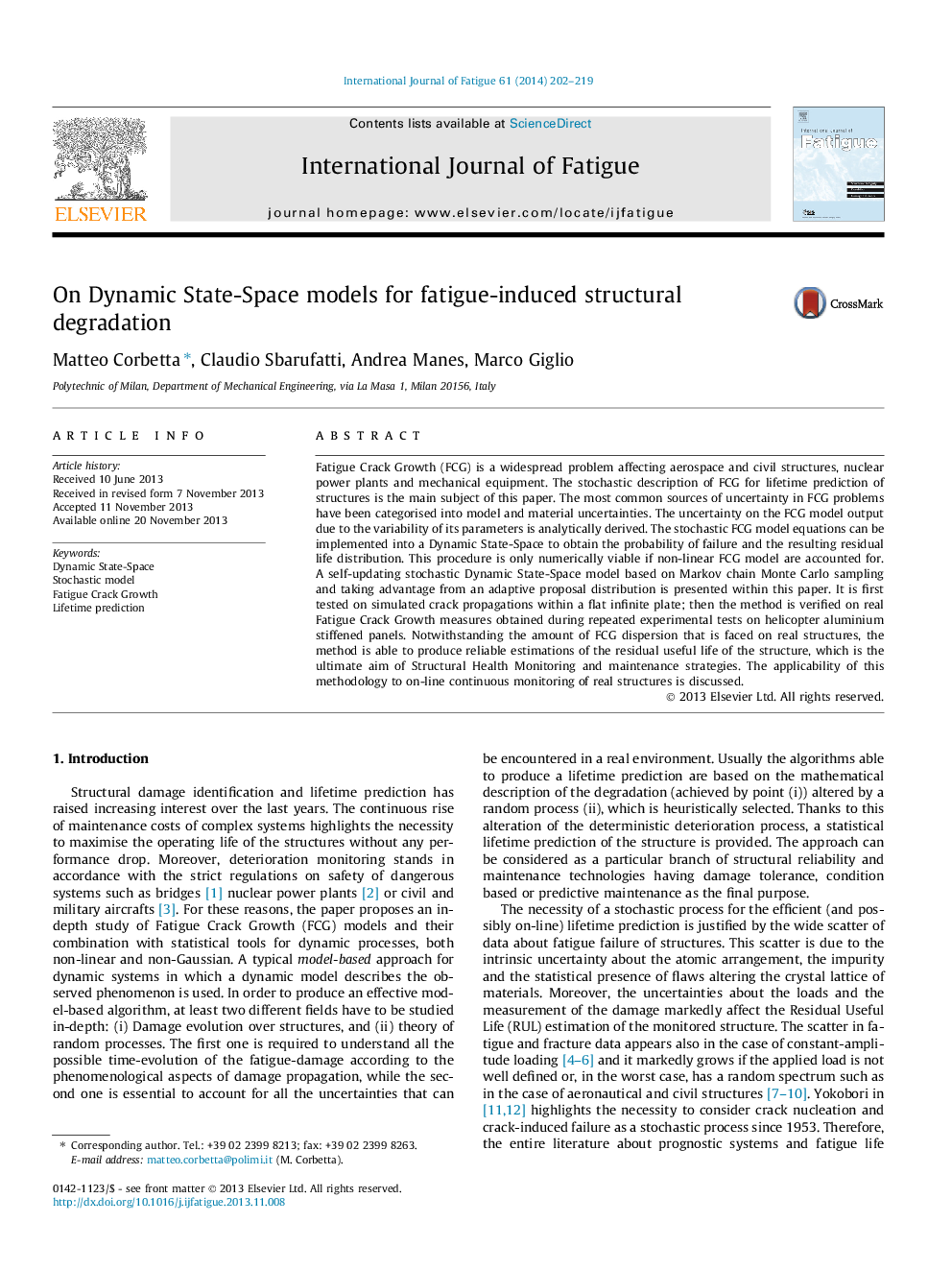| کد مقاله | کد نشریه | سال انتشار | مقاله انگلیسی | نسخه تمام متن |
|---|---|---|---|---|
| 777644 | 1463771 | 2014 | 18 صفحه PDF | دانلود رایگان |
• Statistical description of several FCG equations (analytical formulations).
• Stochastic description of DSS models for Fatigue Crack Growth using NASGRO law.
• RUL estimation using MCMC algorithms with adaptive proposal distribution.
• Preliminary analysis of the threshold SIF range updating on lifetime predictions.
• Validation of the method by crack growth tests on portions of helicopter fuselage.
Fatigue Crack Growth (FCG) is a widespread problem affecting aerospace and civil structures, nuclear power plants and mechanical equipment. The stochastic description of FCG for lifetime prediction of structures is the main subject of this paper. The most common sources of uncertainty in FCG problems have been categorised into model and material uncertainties. The uncertainty on the FCG model output due to the variability of its parameters is analytically derived. The stochastic FCG model equations can be implemented into a Dynamic State-Space to obtain the probability of failure and the resulting residual life distribution. This procedure is only numerically viable if non-linear FCG model are accounted for. A self-updating stochastic Dynamic State-Space model based on Markov chain Monte Carlo sampling and taking advantage from an adaptive proposal distribution is presented within this paper. It is first tested on simulated crack propagations within a flat infinite plate; then the method is verified on real Fatigue Crack Growth measures obtained during repeated experimental tests on helicopter aluminium stiffened panels. Notwithstanding the amount of FCG dispersion that is faced on real structures, the method is able to produce reliable estimations of the residual useful life of the structure, which is the ultimate aim of Structural Health Monitoring and maintenance strategies. The applicability of this methodology to on-line continuous monitoring of real structures is discussed.
Journal: International Journal of Fatigue - Volume 61, April 2014, Pages 202–219
